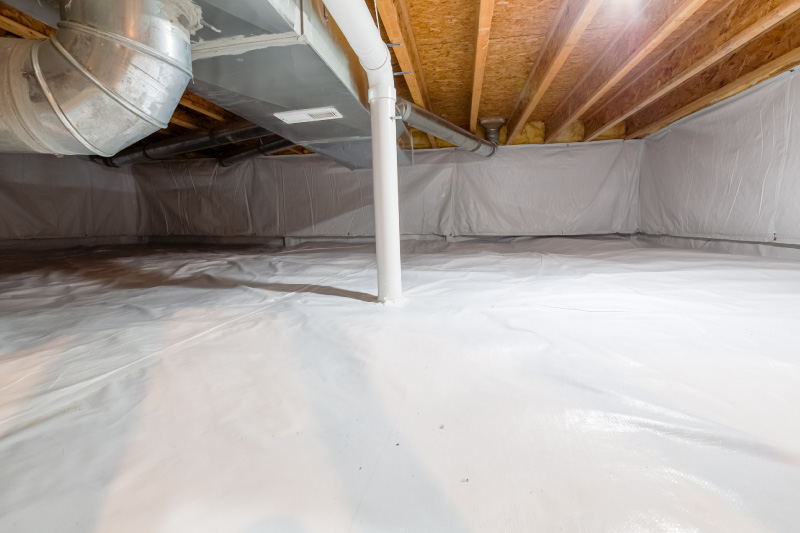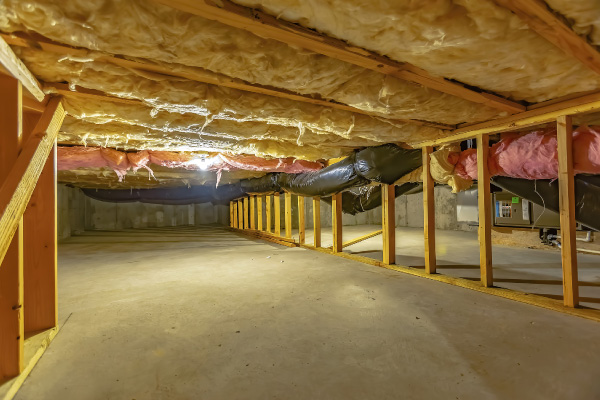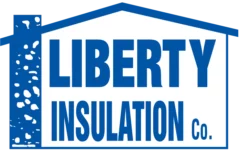Your home is your castle. And with any castle, it needs fortifying. While today’s homes in Pennsylvania are built with energy efficiency in mind, there’s one spot that’s often overlooked: the foundation. Protecting your foundation is crucial for your home’s longevity and safety, but it is under constant attack from moisture and extreme temperatures. Thankfully, insulation steps in as a powerful shield, protecting your home where it matters most.
Key Threats to Pennsylvania Foundations
Our Pennsylvania climate is no joke. With 38–46 inches of rain each year and harsh freeze-thaw cycles, the ground under your home is always shifting. These changes can weaken your foundation over time. Moisture sneaks in through tiny cracks, while freezing soil expands and contracts, putting pressure on your walls and footings. This can lead to mold, erosion, cracks, uneven floors, and structural damage, all problems no homeowner wants.
How Insulation Protects Your Foundation
Insulation isn’t just for warmth—it’s your foundation’s armor. Here’s how it helps:
Stabilizes Temperatures
Insulation creates a thermal barrier that reduces heat transfer, minimizing freeze-thaw stress and reducing frost penetration and ground movement. It also raises the temperature of the soil adjacent to your home.
Controls Moisture
The right insulation material acts as a moisture barrier to block humid air and water vapor infiltration, while working to prevent condensation for a drier foundation environment.
Relieves Soil Pressure
By maintaining stable ground temperatures and humidity levels, insulation prevents the kind of shifting that causes cracks.

Common Foundation Insulation Materials
Learn more about popular insulation options for your home’s foundation.
Spray Foam Insulation
This expanding foam creates an airtight seal, has a high R-value per inch and resists water (closed-cell spray foam). It’s an excellent choice for rim joists and sealing penetrations.
Rigid Foam Board
Excellent for basement walls and crawl spaces, this insulation choice is good for both interior and exterior walls. It doesn’t absorb water or support mold and creates a continuous insulation layer. It does require a fire-rated cover when used indoors.
Fiberglass Insulation
Inexpensive and easy to use but must be handled carefully. Use fiberglass batts with a vapor barrier and never place them directly against concrete.
Best Practices for Insulating Specific Areas
Basement Walls
Basements are high-risk zones for moisture. Use rigid foam board or closed-cell spray foam to create a strong, moisture-resistant layer. You also want to ensure your basement has proper damp proofing and drainage. And for new construction consider exterior insulation.
Crawl Spaces
Modern building science recommends encapsulating and insulating rather than venting. Encapsulation keeps moisture out and warmth in. Install a heavy-duty vapor barrier and cover your crawl space walls with foam insulation like closed-cell spray foam or rigid foam boards. This protects the entire space and boosts energy saving. Also consider conditioning the space with an HVAC vent or dehumidifier.
Rim Joists
These wood connections between your foundation and floor are often forgotten. Start by air sealing, then insulate with spray foam or rigid foam pieces sealed at the edges. Check for moisture issues before insulating and don’t rely on fiberglass insulation alone.
Additional Benefits of Foundation Insulation
Insulating your foundation does more than protect your home’s structure. You’ll also enjoy:
Improved energy efficiency
Reduce heat loss, save money on your utility bills (up to 15% annually), and give your HVAC unit a break. And you’ll enjoy a less drafty house with better indoor temperature maintenance.
Warmer floors and more comfort
Eliminate cold spots on your ground floor, especially in bedrooms over your crawl space (if you have one). And improve the comfort of your family, both old and young, with a more even temperature throughout your home.
Pest prevention
Air sealed spaces eliminate entry points and moisture that attract insects or rodents. Foam insulation doesn’t provide food or nesting material, creating an inhospitable environment for pests.

Warning Signs Your Foundation Needs Attention
Watch for early warning signs like:
- Cracks in your walls or floors (especially ones that are long, widening, or horizontal).
- Doors that stick or uneven floors.
- Water leaks, stains or persistent dampness.
- Sudden energy bill spikes.
- Persistent drafts or chilly floors.
- Mold growth or musty smells.
Trust Liberty Insulation: York’s Insulation Experts
At Liberty Insulation, we know the challenges homes in Pennsylvania face. Our expert team has a deep understanding of our climate and construction patterns, including local soil conditions and up-to-date Pennsylvania building codes and requirements. With our whole-home approach to foundation issues, we consider ventilation, vapor barriers, drainage, and insulation as one system so we can address your moisture, air leakage, and heat loss issues simultaneously.
We are the area’s largest independent insulation contractor because we prioritize quality customer service and materials. So, don’t wait for small issues to become major repairs. Foundation insulation is an investment in comfort, stability, and long-term energy savings. Contact us today to protect your home from the ground up.
Works Cited
Better Homes and Gardens. (March 20, 2025). Is your foundation safe? 8 indicators you shouldn’t overlook. https://www.bhg.com/signs-foundation-needs-repair-11693810
Department of Energy. (n.d.). Building foundations section 4-1 water/moisture. https://foundationhandbook.ornl.gov/handbook/section4-1-water.shtml#:~:text=Techniques%20for%20controlling%20the%20build,and%20hazardous%20to%20one%27s%20health
Pennsylvania Housing Research Center. (n.d.). Insulating basements. https://www.phrc.psu.edu/assets/docs/Publications/BB0710.pdf#:~:text=whichever%20is%20less%20%E2%80%A2%20Basement,13%20for%20cavity%20insulation
Pennsylvania Housing Research Center. (n.d.). Crawlspaces revisited. https://www.phrc.psu.edu/assets/docs/Webinars/Crawlspaces_Revisited_HANDOUTS.pdf#:~:text=%E2%80%A2%202015%20IRC%20N1102,Insulated%20Walls%20for%20Unvented%20Crawlspace
Pennsylvania State Climatologist. (n.d.). Pennsylvania climate data. https://climate.met.psu.edu/data/state/#:~:text=Precipitation%20is%20fairly%20evenly%20distributed,inches%20less%20than%20the%20wettest
PestWorld.org. (n.d.). Bugs, mice in crawl space. https://www.pestworld.org/pest-in-the-house/basement/crawl-space/#:~:text=Bugs%2C%20Mice%20in%20Crawl%20Space,more%20about%20how%20to
Rogers, D. A. (n.d.). Damage to foundations from expansive soils. Missouri University of Science and Technology. https://web.mst.edu/rogersda/expansive_soils/DAMAGE%20TO%20FOUNDATIONS%20FROM%20EXPANSIVE%20SOILS.pdf#:~:text=Expansive%20soils%20pose%20the%20greatest,Sources%20of%20water
U.S. Department of Energy. (n.d.). Building America top innovations hall of fame profile – Basement insulation systems. https://www.energy.gov/eere/buildings/articles/basement-insulation-systems-building-america-top-innovation#:~:text=can%20be%20a%20significant%20source,and%20analyses%2C%20Building%20America%20researchers
U.S. Department of Energy. (n.d.). Moisture control. https://www.energy.gov/energysaver/moisture-control#:~:text=Foundation%20Moisture%20Control[/vc_column_text][/vc_column][/vc_row][/vc_section]

